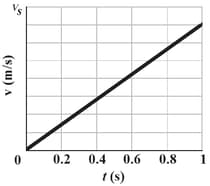Problems
Resnick & Halliday Physics Solutions for Exercise - Problems
Simple step-by-step solutions to Problems questions of Rolling, Torque, and Angular Momentum from Principles Of Physics International Student Version. Also get 3D topic explainers, cheat sheets, and unlimited doubts solving on EMBIBE.
Questions from Problems with Hints & Solutions
A car travels at on a level road in the positive direction of an x axis. Each tire has a diameter of . Relative to a woman riding in the car and in unit-vector notation, what are the velocityat the (a) center, (b) top, and (c) bottom of the tire and the magnitude of the acceleration at the (d) center, (e) top, and (f) bottom of each tire? Relative to a hitchhiker sitting next to the road and in unit-vector notation, what are the velocity v at the (g) center,
(h) top, and (i) bottom of the tire and the magnitude of the acceleration at the (j) center, (k) top, and (1) bottom of each tire?
An automobile traveling at has tires of diameter. (a) What is the angular speed of the tires about their axles? (b) If the car is brought to a stop uniformly in complete turns of the tires (without skidding), what is the magnitude of the angular acceleration of the wheels? (c) How far does the car move during the braking?
A solid ball of radius is initially rolling smoothly at along a horizontal floor. It then rolls smoothly up a ramp until it momentarily stops. What maximum height above the floor does it reach?
A uniform solid sphere rolls down an incline. (a) What must be the incline angle if the linear acceleration of the center of the sphere is to have a magnitude of ? (b) If a frictionless block were to slide down the incline at that angle, would its acceleration magnitude be more than, less than, or equal to ? Why?
From an initial height , a solid ball rolls smoothly down one side of a U-shaped ramp and then moves up the other side which is frictionless. What maximum height does the ball reach?
In figure shown below gives the speed versus time for a object of radius that rolls smoothly down a ramp. The scale on the velocity axis is set by . What is the rotational inertia of the object?

In the figure shown below, a solid cylinder of radius and mass starts from rest and rolls a distance , without slipping. (a) What is the angular speed of the cylinder about its center as it leaves the roof? (b) The roof's edge is at height . How far horizontally from the roof's edge does the cylinder hit the level ground?

The figure shown below shows the potential energy of a solid ball that can roll along a axis. The scale on the axis is set by The ball is uniform, rolls smoothly and has a mass of . It is released at headed in the negative direction of the axis with a mechanical energy of . (a) If the ball can reach , what is its speed there and if it cannot, what is its turning point? Suppose instead, it is headed in the positive direction of the axis when it is released at .
(b) If the ball can reach what is its speed there and if it cannot, what is its turning point?

